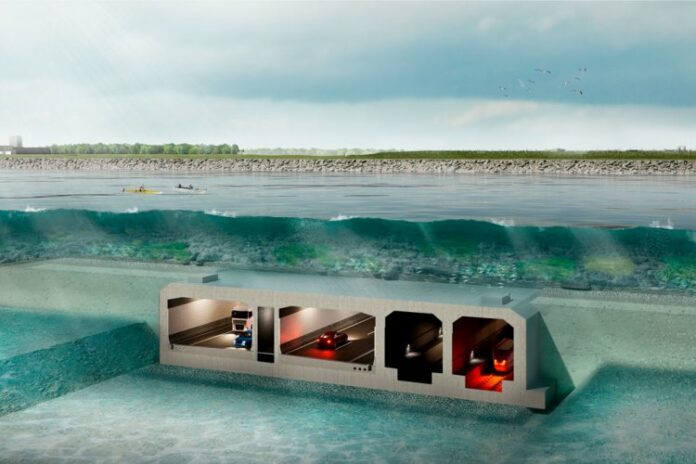Monday 17 June was a historic day for the construction of the Fehmarnbelt tunnel. On this day His Majesty King Frederik X of Denmark officially inaugurated the first tunnel element in what will be the world’s longest immersed tunnel.
Construction of the Fehmarnbelt tunnel formally began at the beginning of 2021 east of Rødbyhavn. Just over three years later, the world’s largest and most advanced production facility for concrete elements has been built, where the 217-metre-long and 73,500-tonne elements for the tunnel will be produced.
Mikkel Hemmingsen, CEO of Sund & Bælt, which is the Danish stateowned enterprise tasked with building the Fehmarnbelt tunnel, highlighted the importance of the Fehmarnbelt project for Danish know-how in engineering and megaprojects.
“Today is visible proof of how far we have come. Just as this project builds on the experience from the Great Belt and Øresund, the Fehmarnbelt tunnel will show the way for many other major projects in Denmark and in the rest of the world,” said Mikkel Hemmingsen.
The Fehmarnbelt tunnel (aka Fehmarn Belt fixed link) is being created by Femern A/S, Rambøll, Arup and TEC, and is described by the team as the world’s longest immersed tunnel (i.e. a tunnel built elsewhere and then sunk into place) and the world’s deepest immersed tunnel with road and rail traffic. The immersed part is important as there are longer undersea tunnels, such as the Channel Tunnel, for example, but it’s still an extraordinary undertaking.
Once complete, it will connect Rødbyhavn in Denmark with Fehmarn in Germany, and will be the shortest route between Scandinavia and the rest of Europe. Travelers will either take a seven-minute train journey or a 10-minute car drive to cross the Fehmarn Belt, replacing a trip that would otherwise have taken 45 minutes by ferry.
To put its size into perspective, the construction of the tunnel will require 360,000 tonnes (396,832 short tons) of rebar, which is the equivalent of almost 50 times the weight of the Eiffel Tower’s metal structure. The build site at the Danish side is the size of 373 soccer pitches. Up to 70 vessels were involved in the dredging of the tunnel trench, which is also 18 km (11.2 miles). In total, around 12 million cubic meters (almost 424 million cubic ft) of soil has been dredged from the seabed.
The immersed tunnel itself consists of 79 standard and 10 special sections. Each of the standard sections weighs around 73,000 tonnes (80,468 short tons) and has a length of 217 m (711 ft), with a width of 42 m (138 ft) and a height of 10 m (33 ft). The smaller special sections are under half the length but are a little wider and higher. The tunnel sections are being cast on land and then floated into position using a barge, before finally being submerged and sealed on the sea bed at a depth of up to 40 m (131 ft).
The Fehmarnbelt tunnel’s budget so far is around DKK8.4 billion (roughly US$1.2 billion). Denmark’s King Frederik X recently inaugurated the first section of the tunnel during a special ceremony and it will be sunk in the coming weeks.
The Fehmarnbelt tunnel is expected to be completed in 2029 and to be in operation for a minimum of 120 years. Check out this video explainer for more information.



